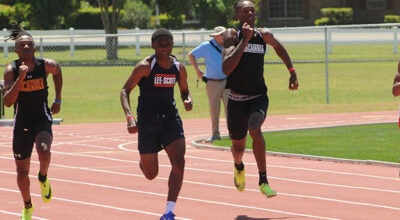Wilso reigns on bait report
Published 12:00 am Wednesday, July 4, 2018
By David Rainer
Department of Conservation and Natural Resources
For the fourth year in a row, Wilson Lake reigns atop the rankings in the Alabama Wildlife and Freshwater Fisheries (WFF) Division’s annual Bass Anglers Information Team (BAIT) Report.
In data compiled for the 2017 fishing year, Wilson totaled 77 quality indicator points to maintain the top ranking over second-place Lake Jordan, which compiled 72 points. Jordan made a big move up from 12th place in the 2016 report. Lake Mitchell and Millers Ferry tied for third with 65 points. Millers Ferry also jumped 10 spots in 2017. Wheeler Lake rounded out the top five with 64 points.
WFF assigns quality indicator points according to average bass weight, percent success, bass per angler per day, pounds per angler per day, and hours required to catch a five-pound bass. The angler day is considered 10 hours.
“Last year was another good year of bass fishing in Alabama,” said WFF’s Kyle Bolton, who oversees the BAIT report, which marks its 32nd year with the 2017 report.
The BAIT report’s objective is to gather information on bass populations from bass club members as well as WFF Fisheries biologists, who use a variety of methods of data collection, including electrofishing.
Bolton said bass anglers have reported more than 15,000 tournament results during the report’s history. Anglers have spent 3.4 million hours collecting data for the report. BAIT’s history includes reports on 928,000 bass that weighed 1.7 million pounds.
In terms of big bass, the top lakes in Alabama were Pickwick, Wilson, Eufaula, Guntersville and Wheeler.
Guntersville had been on everybody’s big bass list earlier in the decade, but the number of large bass caught slipped for a few years. The lake seems to be on the rebound toward outstanding bass fishing.
Bolton said in 2017, Guntersville had about 70-percent success, which is on par with the 30-year average. The average weight was 2.74 pounds, dead on the 30-year average.
However, Guntersville also produced the largest winning weight in the state last year when Casey Martin, fishing in the BFL Bama Division tournament in March of 2017, weighed in a five-fish stringer at 40.69 pounds.
Pickwick’s indicators were well above the long-term average. The most telling statistic that put it near the top in big bass lakes was that it only took 80 hours to catch a bass five pounds or larger. Pickwick also set a lake record for the average weight per bass at 2.81 pounds.
Eufaula had two tournaments in 2017 where 15 bass larger than five pounds were weighed.
In 2017, several other lake records were set. Lake Jordan set three records with an average weight of 2.51 pounds, bass per angler per day at 4.42 and pounds per angler per day at 11.10. Lake Mitchell set two records with 4.46 bass per angler per day and 8.69 pounds per angler per day. The Mobile-Tensaw Delta also set two marks with 4.69 bass per angler per day and 8.23 pounds per angler per day.
Bolton said some of the reservoirs in Alabama are not represented because WFF doesn’t receive enough tournament reports to validate the data.
The standard electrofishing data WFF biologists gather include growth, mortality, recruitment and abundance. They scoop up the stunned fish, weigh and measure them. Some are returned to the water as soon as possible. Others are retained to pull the otoliths (ear bones with growth rings) to check the age of the fish.
Bolton hopes the number of reports will increase significantly now that a new tool is available for tournament anglers. WFF added an online feature at http://tournaments.dcnr.alabama.gov/ that will allow tournament officials to quickly report the results.
“The past few years, we’ve only had two options to turn in tournament results,” Bolton said. “Those were submitting an Excel form via email or a paper copy via regular mail.
Bolton said several options are available on the above website. Tournament anglers should click on the BAIT tab and enter their Conservation ID number and birth date to verify the angler’s identity. After the angler’s Conservation ID and birth date are entered the first time, they will be saved and should not have to be entered on subsequent reports.
After filling out the form and entering the tournament results, the angler will hit submit to transmit the report to WFF.





